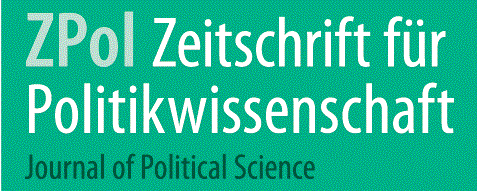Im ersten Beitrag der fünfteiligen Serie zu „Die soziale Schieflage der Wahlbeteiligung“ (Abwärts! Die Fakten zur Wahlbeteiligung im Sinkflug) haben Prof. Dr. Michael Kaeding, Morten Pieper und Stefan Haußner die Fakten aufgezeigt: Die Wahlbeteiligung in Deutschland, NRW, Duisburg und Europa sinkt seit Jahren stetig.
Doch ist das ein Problem? Die nach Wahlen beinahe obligatorisch folgende Debatte über fehlende Partizipation endet häufig damit, dass der Wählerwille mit dem Volkswillen gleichzusetzen sei, beziehungsweise dass ein hoher Anteil Nichtwähler unproblematisch sei, da die Nichtwähler ja ebenso die Chance zur Wahl gehabt hätten und diese bewusst nicht nutzten, weil sie schlichtweg zufrieden mit der gegenwärtigen Lage seien.
Zu selten wird in den (kurzen) öffentlichen Debatten in dem Zusammenhang die Frage gestellt, wer die Nichtwähler sind und welche Motive sie zur Wahlenthaltung führen. Gibt es eine homogene Gruppe, die aus ähnlichen Motiven nicht wählen geht? Oder handelt es sich um eine Vielzahl von Motiven? (mehr …)
Die StädteRegion Aachen – Kommunale Integration zwischen Wirtschaftlichkeit und Repräsentation
Am 21. Oktober 2009 wurden entsprechend § 1 des „Städteregion Aachen Gesetzes“ vom 26. Februar 2008 die kreisfreie Stadt Aachen und der Kreis Aachen mit den Städten Alsdorf, Baesweiler, Eschweiler, Herzogenrath, Monschau, Stolberg und Würselen sowie den Gemeinden Roetgen und Simmerath zum Gemeindeverband Städteregion Aachen – in der Eigenschreibweise StädteRegion Aachen – zusammengeschlossen. Die StädteRegion Aachen wurde Rechtsnachfolgerin des Kreises Aachen. Die Stadt Aachen wurde „städteregionsangehörige Stadt“, behielt aber rechtlich den Status einer kreisfreien Stadt.
Die Gründung der StädteRegion war Konsequenz einer längeren Entwicklung, in der seit den 1990er Jahren die Kooperationsbeziehungen zwischen der Stadt Aachen und dem angrenzenden Kreis Aachen immer enger geworden waren. Die „Geburt der StädteRegion“ wurde am 24. und 25. Oktober mit verschiedenen Veranstaltungen gefeiert. Der Städteregionstag, Nachfolger des Kreistags des Kreises Aachen, war bereits am 30. August 2009 gewählt worden. Erster Städteregionsrat wurde der CDU-Politiker und bisherige Kreisdirektor des Kreises Aachen, Helmut Etschenberg.
Improving Consultation and Cooperation to Create a National Strategy: Drafting Estonia 2020
Following its break with the Soviet Union in 1991, Estonia turned away sharply from Moscow’s eco- nomic policies. The new government increased reliance on markets, acquired new trading partners, and began to model itself after nearby Nordic countries such as Finland and Sweden.
In that changed environment, enhanced national competitiveness—the ability of firms and farms to find buyers for their goods and services—featured prominently on the country’s political agenda. The government wanted to raise the incomes of its 1.57 million citizens and “improve the welfare and well-being of the country,” said Siim Sikkut, information and communication technology policy adviser for Estonia’s Government Office, which supported the prime minister and cabinet ministers.
Mapping a Transformation Journey: A Strategy for Malaysia’s Future, 2009-2010
In April 2009, Koh Tsu Koon was in his car on the way to Malaysia’s capital from his home in Penang when the radio announced his appointment to a brand-new ministerial post in the Cabinet. The country’s new prime minister, Najib Razak, had named him Minister of National Unity and Performance Management.
“I nearly fainted,” Koh said, upon learning of the breadth of his new role, which was announced only days after Najib took office. In his speech, the prime minister explained that Koh would help build a more accountable government and improve living standards for the Malaysian people. “I know, and the people throughout the country know, that to achieve our country’s long-term ambitions, we need not only policy renewal but also political and institutional renewal,” Najib said. The first step was to identify a strategic direction for the country, and Koh would be responsible for the task.
Forgoing a National Strategy Through EU Accession: Serbia, 2007-2012
If there was one thing most Serbian citizens could agree on in 2004, it was the need for a new national vision.
Serbia was still reeling from the crises and conflicts of the 1990s. The multiethnic federation of Yugoslavia had collapsed violently. The republics of Bosnia, Croatia, Slovenia, and Macedonia had seceded, leaving behind a reduced federation made up of Serbia and Montenegro. By the late 1990s, the violence and talk of secession had spread to the formerly autonomous province of Kosovo, which was dominated by ethnic Albanians and was part of Serbia. A NATO bombing campaign in 1999, which aimed to stop the violence and mass killings in Kosovo, decimated the Yugoslav army and caused major damage to the capital city of Belgrade and to Serbia’s infrastructure.
In October 2000, massive street demonstrations in Belgrade ousted Slobodan Milošević, leader of the Socialist Party of Serbia and president of the country since 1989. In elections later that year, the Democratic Opposition of Serbia — a broad coalition of parties — won federal, parliamentary, and local posts and installed Zoran Đinđić as the new prime minister to work in cooperation with the country’s president, Vojislav Koštunica.1 However, the elections did not bring stability. In 2003, Đinđić was assassinated by a former Special Forces operative who had ties to organized crime and who sympathized with Milošević, whom the prime minister had extradited to the International Criminal Tribunal for the former Yugoslavia.
Strategic Privatization: Railway Transportation in the 21st Century
Spring 2008
Wolfgang Tiefensee, Germany’s Federal Minister for Transport, Building, and Urban Development from the Social Democratic Party of Germany (SPD), stated at a press conference on April 15, 2008 that the SPD Commission’s proposal to partially privatize the Deutsche Bahn Corporation was a “decisive step” in the privatization debate and confidently declared that the coalition has now “opened the door for the future security of the train service.” Tiefensee was confident that the way was finally clear to implement his brain- child, the DB privatization. However, this proved to be a miscalculation as the events of 2008 unraveled.
The journey begins
The German railroad system is dominated by the state-owned company Deutsche Bahn (DB), which is not only active in transporting passengers and freight but also manages railway infrastructure and operates logistics enterprises across the globe. The DB is engaged in transnational freight and passenger transport and has started to invest in international passenger transport. In 2006 the DB employed 237,299 persons, had revenues of 30 billion euros and earned a net profit of 1.68 billion euros. The freight and transport ventures are dominated by non-railroad transport and logistic activities, amounting to 13.8 billion euros in revenue. Schenker, a subsidiary company, handles 13.2 billion of this revenue, and the small-specialized logistic service company Stinnes is responsible for the remainder. Railroad transports by Railion account for only 3.2 billion euros in revenue. Altogether the freight and transport ventures (Schenker, Stinnes and Rail- ion) account for 46% of the DB’s revenue and for 25% of its profits.
Peer Producing Public Policy: Nicholas Negroponte, Walter Bender, and the OLPC
In April 2008, Walter Bender sat down at his laptop. For the last two years, he had worked at One Laptop per Child (OLPC), more often referred to as the $100 laptop project. This non-profit organization hopes to change the world by constructing a cheap and robust laptop to be used in the education of children in developing countries. OLPC’s vision is to empower children and enable them to use the $100 laptop as a learning tool and a way to contact the rest of the world.
The idea of the OLPC project was to reduce the costs of laptop computers to less then $100, by turning Moore’s law on its head (instead of aiming for increased speed, the idea was to reduce cost and power consumption) and by selling directly to governments in batches of 1 million for distribution in schools. The project has been able to capture the imagination of the world. At times, it was seen as a competitor to the big hard- and software companies, it led to commercial copies such as the EeePC, was hailed by the open source software development community, and promised to transform primary education worldwide. The project created a new market for low-budget laptops and initiated many policy debates about educational approaches in primary education.
Aerospace Clusters and the German Dual Vocational System: Addressing the lack of skilled technicians in emerging regions
In 2013, three prominent aerospace firms in Mexico were facing the scarcity of skilled technicians: GNK Aerospace in Baja California, Tetakawi Maquiladoras in Sonora and Bombardier in Querétaro. With 287 aerospace firms already in Mexico and an expected 14% annual export growth, or $12.3 bn by 2021, the firms needed immediate access to a pool of skilled technicians. They addressed this challenge by approaching local schools in order to design new training schemes that would take into account the specific needs of the industry.
This has been made possible by a recent national pilot program on dual vocational systems, a variation of the so-called vocational German Dual System (GDS), developed together by the Ministry of Education, the Business Chamber and the German Embassy in Mexico. The newly created training schemes have formally linked aerospace firms with technical schools. Firms pro- vided state-of-the-art equipment, trained the school instructors and updated the curricula. In return, the schools offered flexible academic programs to students who received training from both, the school and the firms themselves, in the form of paid apprenticeships. Even though the new training schemes in the three locations were independent from each other, they all responded to the pressure to keep up with the increasing demand for skilled technicians in the aerospace industry. They also showed key lessons about transposing German Dual Vocational Systems to developing regions.
Horizon 2020: Shaping EU Innovation Policy through Interest Representation
The European Union has been long investing in promoting research and innovation across its Member States with the objective of increasing the competitiveness of Europe. These efforts include not only direct funding to research and innovation but also significant efforts in coordination to ensure the results of European scientific research have a real impact on the economy. Since 1984, the EU – through the European Commission – has been implementing the so-called ‘Framework programmes’ (FPs), the main financial tool to support research and development activities covering almost all scientific disciplines. The latest FP, called FP7, ran from 2007 until 2013.
In 2011, as FP7 was approaching its end and a new EU budgetary period (2014-21) would start, the EU sized the opportunity to give its research and innovation policy a new strategic approach in order to tackle the on-going financial crisis and to redirect Europe onto a growth path. The main aim was to stabilize the financial and economic system while creating economic opportunities and tackling the “innovation emergency” that was affecting Europe. This new concept – named Horizon 2020 – was thought to be an essential part of the Europe 2020 strategy for smart, sustainable and inclusive growth. Commissioner for Research, Innovation and Science, Máire Geoghegan-Quinn; Rapporteur MEP Teresa Riera; and members of the Irish Council Presidency were to embark in the design and legislative approval of this new €80 bn policy, bringing along the views of major stakeholders.
Monterrey Digital: Digital Government for Municipalities
Monterrey is the second most important city in Mexico. The municipality has 1.1 million inhabitants (2000 census), and it is also in the center of 7 municipality cluster that contains 82.1% of the population of the state of Nuevo Leon1. Managing the city on a day to day basis requires its fare share of attention.
In the Fall of 2006, Edgar Olaíz the Mayor of Monterrey was inaugurating the project Monterrey Digital, an important strategic project of the municipal government, shortly before handing over the municipal administration to the newly elected Mayor Adalberto Madero.
In Mexico, local elections are held every three years and since reelection is not permitted there is a new Mayor after every cycle. In this particular case, the incoming Mayor is from a different political party (PAN), which made the process of transferring control difficult and the question was if this program that Edgar Olaíz considered as very important would continue. (mehr …)





